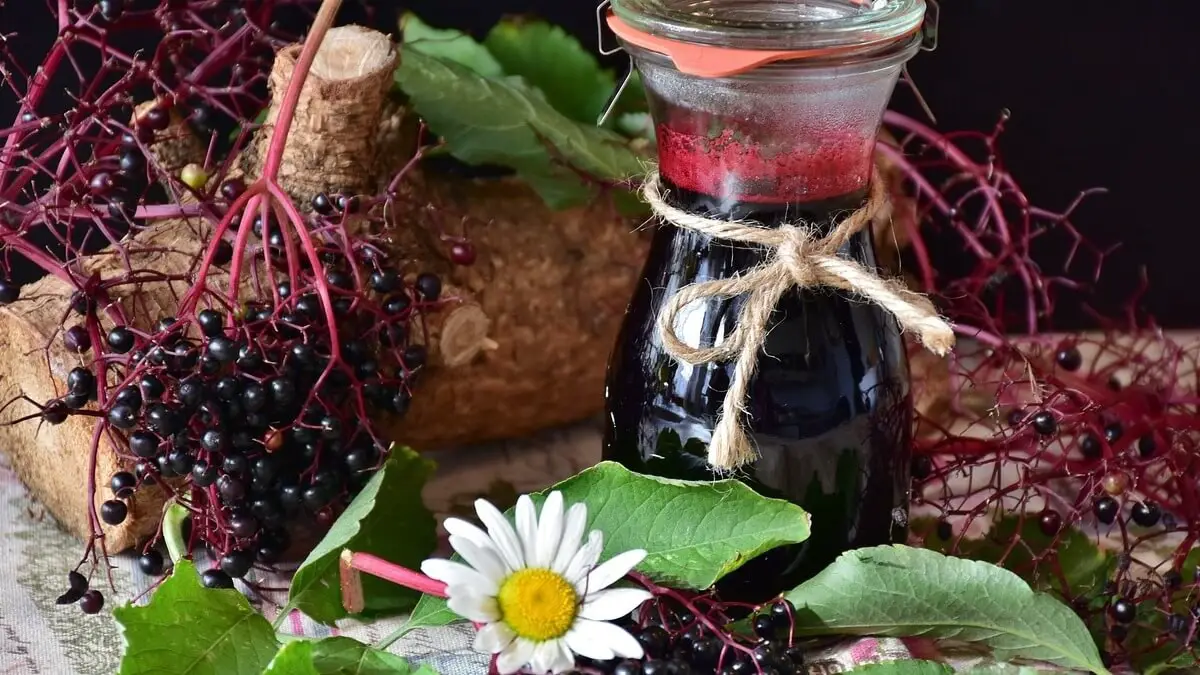Growing Elderberry Bush in Gardens
Elderberry bush grows in homesteads and farms. Although these highly adaptable plants prefer moist soils, they can thrive in many types of soils. Hence, you can see them growing even in rocky lands near Nebraska and many other areas.
Small birds love to eat these berries. Humans use these fruits in baking foods, preparing tinctures, and so on. Elderberry bush largely depends on nitrogen for its existence. Hence, you can find them in abundance near organic waste disposal areas, particularly in summer.
This article primarily focusses on S. Canadensis (Elderberry), Its propagation, caring, harvest, and uses
Its Biological name is Sambucus Canadensis. Biologists compare its morphology and genes to genus Adoxa. Therefore, its genus belongs to the Adoxaceae family.
This genus mostly grows in temperate to subtropical regions. Hence, you can see it growing lushly in the Northern Hemisphere region. British gardeners grow Elderberry bush as hedgerow plants. Most US gardeners grow these plants for berries in their gardens.
There are many types of elderberries available in nature. In fact, some of them are toxic too. You can grow many varieties including include Scotia, Nova, Lacinaiata, Adams, York, Johns, and Kent in home gardens.
Generally, S. Racemose, S. Nigra, and S. Canadensis are grown as ornamental plants. S. Canadensis is an American species and S. Nigra is a European species. Similarly, S. Racemose is native to North America, Europe, and also northern temperate Asia.
Table of Contents
Planting Elderberry Bush
Generally, these plants are not affected by soil pH level or type. It just needs sufficient sunlight to grow.
However, Nicole Haxton (University of Nebraska) recommends partial shady and cool areas to grow these bushes. Similarly, Cornell University suggests a soil pH of about 5.5 – 6.6 to grow them.
Like most plants, these bushes need proper drainage. If they happen to grow in water logging areas, root rotting is inevitable.
Also, these plants do cross-pollination. So, plant them in pairs. For better results, the distance between the plants should not exceed 60 feet. But, ensure reasonable spacing between them so that the air can pass freely. This helps to prevent many plant diseases.
Propagation of Elderberry Bush
Ideally, start the propagation during spring. These low maintenance plants grow about 12 feet in height and spread about six feet across
Softwood Cuttings
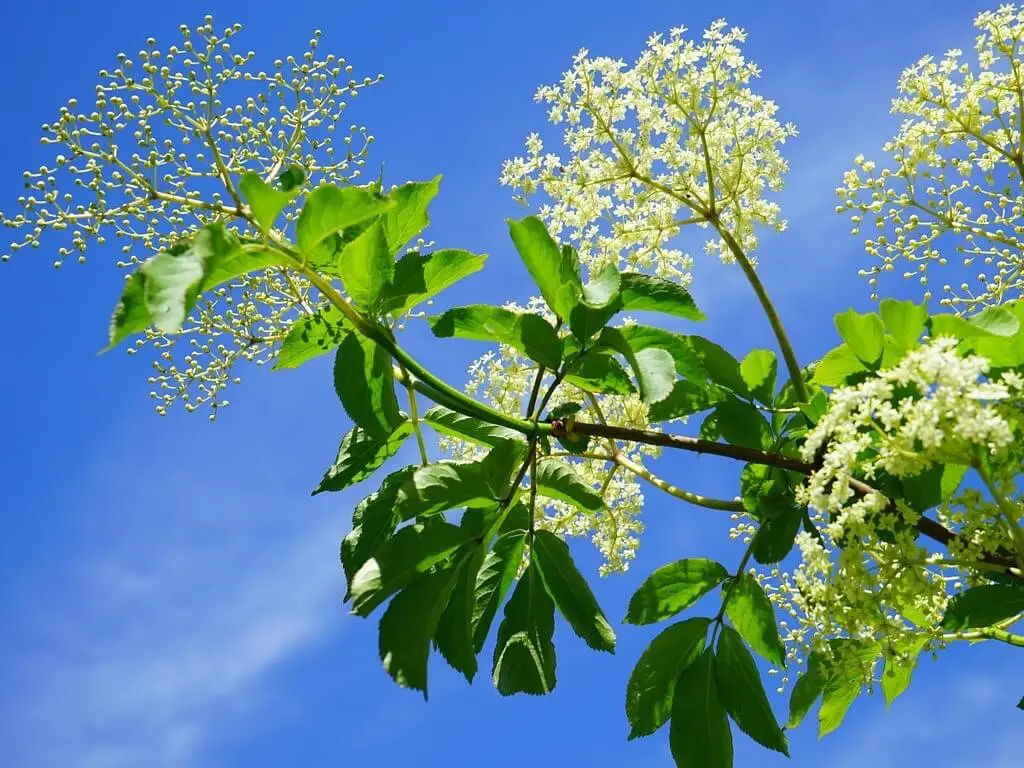
Submerge the cutting edges in a bowl of freshwater for around 12 hours. Then, plant them in a container filled with soil. The cuttings may root by fall. After that, transplant them in your garden. Make sure the plant receives a good amount of sunlight.
Maintain the soil moisture. Don’t overwater. Within a few weeks, the cuttings will start to grow healthy, rooting deeply.
Seeds
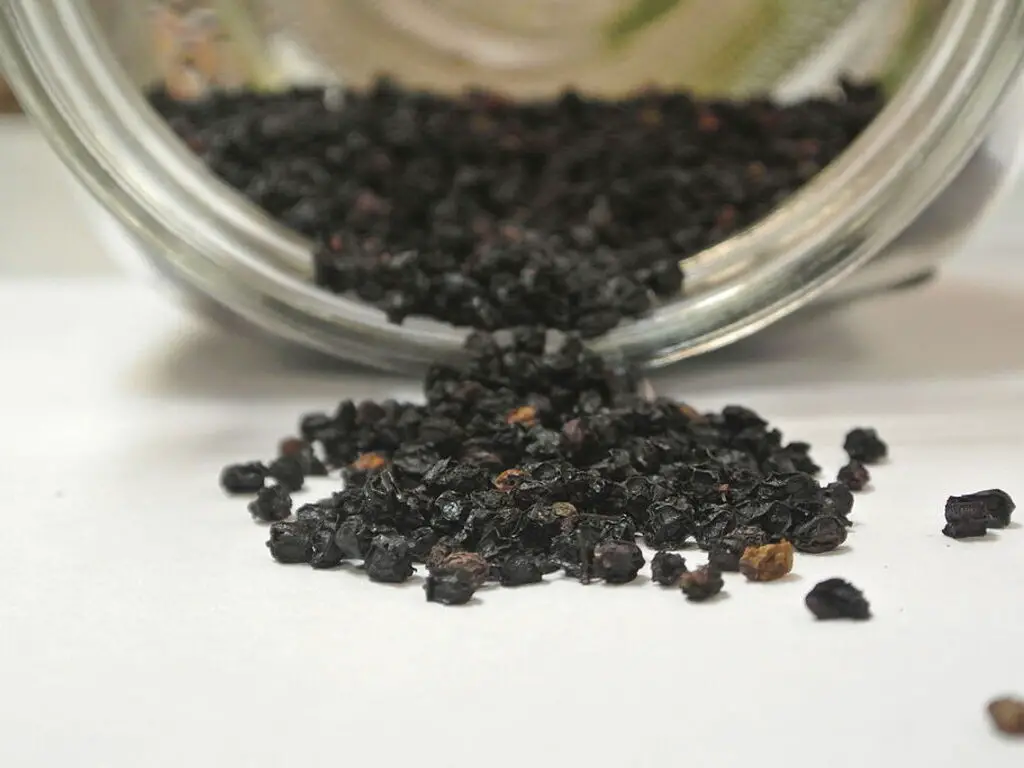
Photo by Veganlover1993 (Wikimedia Commons) (CC BY-SA 3.0)
Normally, Elderberry bush seeds have impermeable, thick seed coating. Their character is also naturally dormant. Hence, stratify twice to initiate germination. This process is quite simple. But you may have to wait up to 7 or 8 months for the seeds to germinate
Collect the ripened fruit during late summer. Separate them from each other and soak them in water for about 24 hours. Use fruits that sink in water. Remove the floating ones.
Separate the seeds from fruit and sow them immediately in 4-inch square pot trays. Each pot in the tray must contain a moistened mixture of half sterile potting soil and half coarse sand. Make sure to plant two elderberry seeds at a depth of 1/4 inch in each pot. Loosely wrap the tray using wrapping plastic.
Keep the Tray near a sunny window. Warm the tray with a germination heat mat with a temperature set to 75 degrees Fahrenheit. Moisture the sand mixture whenever it is dry. Maintain the seeds in this condition for two months
After that, move the tray to an area where the temperature is about 40 degrees Fahrenheit. (refrigerator or heavily shaded areas). Remoisturise the sand continuously when it dries. Maintain seeds in this condition for 3 – 5 months.
Now remove the plastic wraps, move the tray to a sunny place. Warm the tray to about 68 degrees Fahrenheit during the night and 85 degrees Fahrenheit during the day. Moisture the soil whenever it is dry. Within a couple of months, you’ll notice the sprouting of seeds. This concludes the successful germination.
Transplantation
You can now remove and dispose of the smaller/failed to germinate seeds from each pot. Grow the remaining germinated seeds under partial sunlight till autumn rains.
After that, expose the tray to direct sunlight for about two weeks. Finally, transplant them in a sunny spot. Make sure to distance them at least 10 feet apart from each other. These plants thrive well in mildly acidic, well-draining soils.
Purchasing
Alternatively, you can also purchase seeds from nearby garden centers. You can find the instructions specific to seeds inside the package.
In fact, the easiest way to grow these plants is to purchase seedlings of your choice from nurseries or online shops and grow them in gardens.
Caring for Elderberry Bush
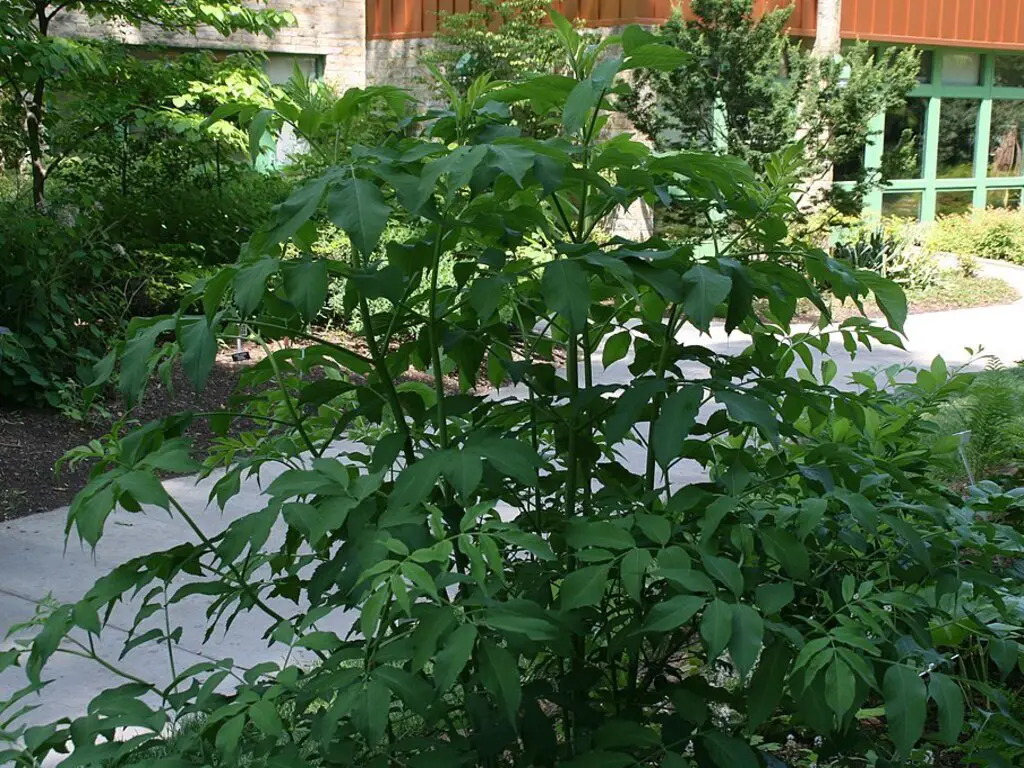
Photo by David J. Stang (Wikimedia Commons) (CC BY-SA 4.0)
Normally, Elderberry bushes are very easy to maintain. In fact, it is nearly a zero-maintenance plant. Some farmers just cut the shoots in the wild and grow them in their gardens. In spite of no human intervention, these ‘pruned wild plants regrow healthily in the forest.
However, you should maintain the tender seedlings carefully during the initial months. After establishing themselves, these plants seldom need caring.
During the initial stages, these plants require plenty of water. So, water them regularly. Avoid over-watering. This helps to prevent water-related diseases such as roots rots.
Amend the soil with compost or manure annually. Cornell University recommends ammonium nitrate (10-10-10) to fertilize the soil.
Pruning, Removing Weeds
Common weeds can weaken the Elderberry Bush. Plucking Weeds from earth soil with bare hands can also shock the Elderberry plant. So, it is a good practice to prevent the weeds from scratch.
You can do this easily by using a good quality landscape cloth. Lay this cloth around the elderberry plant. Also, use a mulch to cover. In spite of all these efforts, if you happen to see stray weeds, use a good-quality weeder to remove them.
Most of the weeding problems can be solved with the above-mentioned solutions. It is not as difficult as some people think.
Normally, pruning these plants is required. However, pruning gives a cultural look. This adds beauty to the natural gardens. For pruning, we recommend you to use good quality, clean, sterilized equipment. This helps to prevent the spreading of diseases among the plants.
Harvesting Elderberry Bush
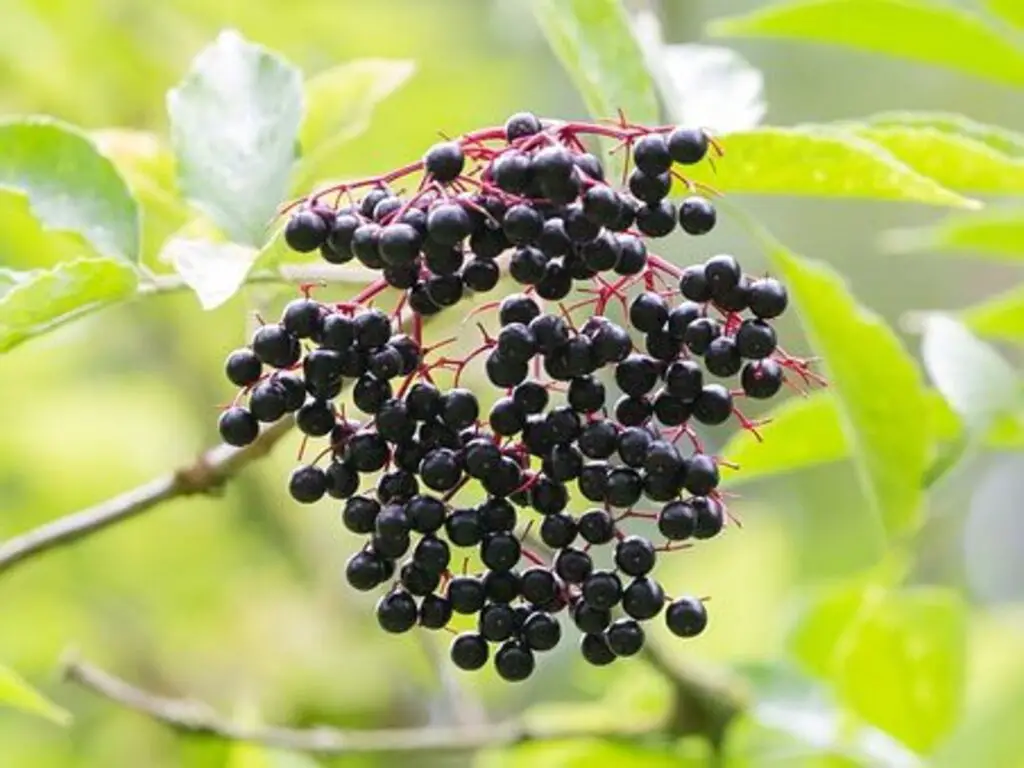
The elderberry bushes bloom in summer. Initially, the white or yellow flowers bloom out of the plants. Then, the flowers develop fruits.
As the fruit clusters appear in summer, keep a watch on them. Harvest them just before ripening. At this stage, berries are dark purple or pale black in color. They will also be soft, spongy, and juicy. If you delay the harvest, the fruits may become less juicy or wrinkled.
In addition, birds and other insects may feed on the ripened berries. This makes them unfit for human consumption.
Plucking the fruits with bare hands can be a painstaking, tedious job. Using garden equipment for harvesting can ease the job. It is also safe for both humans and the plant.
Using pruning equipment, cut the entire cluster of fruit. Collect it in a large bucket. Repeat this procedure for every plant. Take home the collection at once and store them in a cool place.
Depending on regions, some places have summer from June to August while others have the same in September. So, knowing the geographical climatic conditions is essential for harvesting crops.
You can gather experience and sharpen your harvesting skill gradually. As a common rule, continued practice makes a job perfect, in this case, we can say almost perfect!
Preparation of Berries
Before using, you have to prepare the fruits harvested from the elderberry bush. There are numerous ways to do that. We have discussed the easy one below
First, rinse the berries in freshwater. Then, lay them flat in a single layer on a good-quality towel to drain fully. Place the drained fruits in a parchment-lined cookie sheet. Then, freeze them for at least 24 hours.
After that, remove the fruit clusters from the freezer and collect them in a plastic storage bag. Gently hit the bag against a counter. You may have to repeat the process a few times to separate all the frozen fruits from the stems.
Finally, separate the berries from the debris such as stems, twigs, etc., Make sure to dispose of the debris. Collect the fruits in a separate container.
Alternatively, you can force separate the berries with forks. After rinsing, soak the fruit clusters in water for a few hours. Then, separate them from stems using forks.
As a drawback, the forcing forks may damage the fruits, depriving their commercial value. This method also results in lots of garbage spreading around. You may have to rake the surroundings to clear the debris.
Toxicity
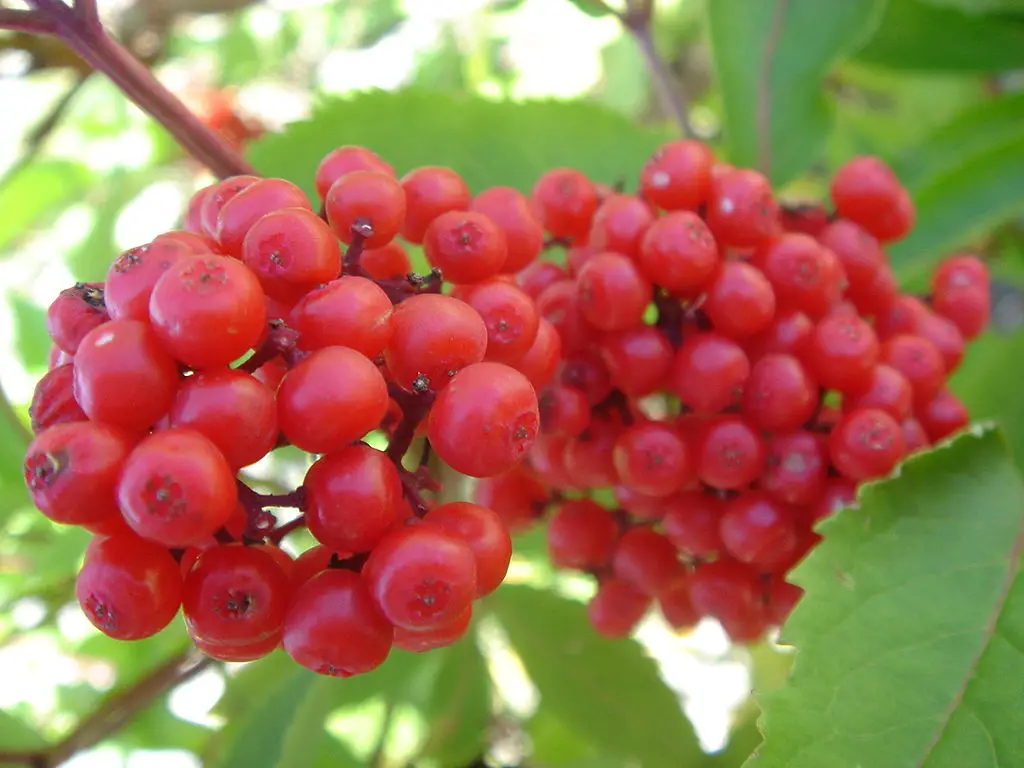
Photo by Ghislain118 (Wikimedia Commons) (CC BY-SA 3.0)
Typically, some varieties like S. Canadensis and S. Nigra are mildly toxic before ripening. There is no guarantee that they may not be toxic even after ripening. Hence, some experts like Maria Noel Groves recommend cooking or dring ripe berries to neutralize the toxic compounds.
CAUTION
S. Racemosa (Red Elderberry) is toxic. It should not be consumed in any form.
The appearance of S. Racemosa is identical to other varieties. Its fruit is usually bright purple or Red in color.
Uses
Nutrition
Elderberries in their raw form, constitute 18% carbohydrates, 80% water, less than 1% each of fat (table), and protein. Every 100 grams of Elderberry can supply 73 calories of energy. It is also a rich source of vitamin C (43% DV), a moderate source of vitamin B6 (18% DV), and iron (12% DV).
Dietary Supplement
Elderberry flowers or fruit are also used as dietary supplements. They are said to prevent or provide relief from various minor diseases such as Constipation, flu, and common colds. However, this is not proved scientifically.
In Spite of these facts, traditional medicine practitioners have been suggesting them for centuries to cure many diseases.
Other Uses
Elderflower cordial, a famous soft drink is made from Sambucus nigra flowers. St-Germain, a renowned French liqueur, and Hallands Fläder, a renowned Swedish akvavit are made from flowers of Elderberry bush.
Basketry dye is created from elderberry fruits and twigs. Hollowed elderberry twigs have been catering as spiles for centuries.
Similar Posts
All about Bunching Onions
Growing Broccolini in Gardens

